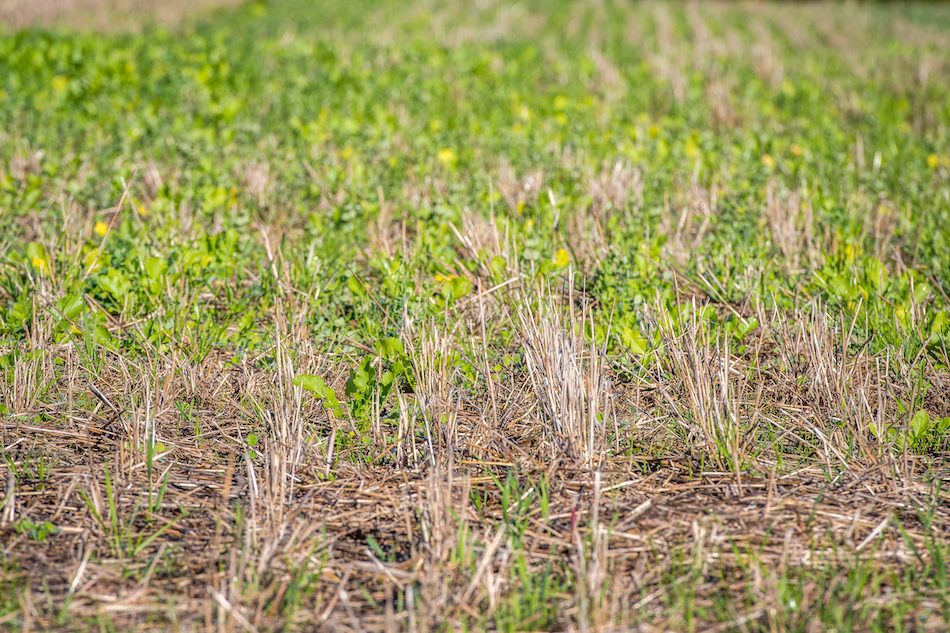The window is still open to plant a cereal rye cover crop.
“Cereal rye is a really hardy cover crop in the fact that it can still germinate at 32 degrees, so even getting it seeded late in the fall, you might get a little bit of growth in the fall but you’ll see some early spring growth that can be really good, as well. Those green roots, those living roots in the soil that really help hold that in place and keep everything there,” said Megan Dwyer, Illinois Corn Growers Association nutrient loss reduction manager.
“2019 is a year a lot of us would like to forget, but there are some lessons to be learned. One of those is we’re seeing more extremes with weather events, especially with water, and we need to be really conscious of how we’re managing that and things that we can do. One of those things is with cover crops, not only to help obviously hold the nutrients in the soil, but also hold our soil in place.”
Nutrient Loss Goals
Cover crops are an important piece of the Illinois Nutrient Loss Reduction Strategy that aims to reduced nitrate-nitrogen and total phosphorous losses into rivers and streams by 15% to 25%, respectively, by 2025 and eventually by 45% for both nutrients.
The strategy does not call for new regulations for either point or non-point sources. However, it does rely on the latest science and the best available technologies to guide statewide efforts to reduced nutrient losses that impact the Mississippi River and ultimately the Gulf of Mexico.
“The Nutrient Loss Reduction Strategy is a big reason that we really see a benefit and want to promote and provide awareness to cover crops. Our first benchmark is by 2025. We’re approaching that deadline and so getting more cover crops on more acres is going to be crucial to do that,” Dwyer said.
The nutrient losses in Illinois tend to be geographical, with nitrate loss the issue in northern Illinois and phosphorous loss in southern Illinois.
“We have more tile lines and we’re seeing more issues of nitrates leaving fields in northern Illinois versus southern Illinois that sees more phosphorous loss which happens with soil moving off of the field,” Dwyer said.
“Cover crops in that situation help hold the soil in place and prevent it from leaving the field when there is a big rain event. It keeps the phosphorous and top soil. We don’t want to lose any top soil if we don’t have to, either.”
Cover crops not only slow erosion, but also scavenge and hold nutrients.
“There are different types of cover crops and most of them are scavengers. They’re going to scavenge the soil looking for nutrients that remain after the cash crop is harvested,” Dwyer said.
Cereal rye is an excellent nitrogen scavenger that will seek out the nitrogen and hold it for next crop. It also frees up potassium that is deeper in the soil profile so it can be used later by crops.
Termination
A concern expressed by those who have yet to try cover crops is spring termination, particularly when the weather may only provide small windows of opportunities to plant cash crops.
“Killing cereal rye, depending on the timing, should be easy. But more and more farmers are adapting planting green and they’re planting into that cover crop when it could be several feet tall, which obviously isn’t the most ideal situation,” Dwyer explained.
“I think that as we get more familiar with cover crops and our ability to handle them, it opens up our window and how we can manage that. For the most part, they’re fairly easy to terminate with your normal herbicide program.”
Another benefit of cover crops is it provides a thicker biomass for weed suppression that continues into the growing season.
There are over 2.9 million prevent plant acres this year across Illinois, Indiana and Iowa and a record of nearly 20 million acres nationwide. Cover crops can play a role in managing those idle acres.
“We don’t advocate leaving a field sit fallow in general because you will start having issues in the spring. With that soil being inactive for a growing season, the microbes and other things in the soil start to reduce their activity as well and translate to problems. Having something out there growing is definitely important,” Dwyer said.
“The prevent plant situation this year actually provides some opportunities for some growers to try cover crops for the first time.”
Cover Program
The Illinois Corn Growers Association, Precision Conservation Management and Beck’s Hybrids partnered this year for a “Reduced Cost Cover Crop Program” for ICGA members who have never used cover crops. The program provided 40 acres of Beck’s oat-radish cover crop mix flown onto a field for a nominal fee to the farmer.
Several with prevent plant acres participated in the program “to give farmers an opportunity for a low cost low impact chance to try cover crops,” Dwyer said.
“It’s our way of helping and trying to make it easier for someone to try cover crops for the first time.
“This year has been challenging enough. Don’t feel like the opportunity is completely lost to get some cover crops seeds and you’ll still see the benefits of it in the spring.”





Post a comment
Report Abusive Comment